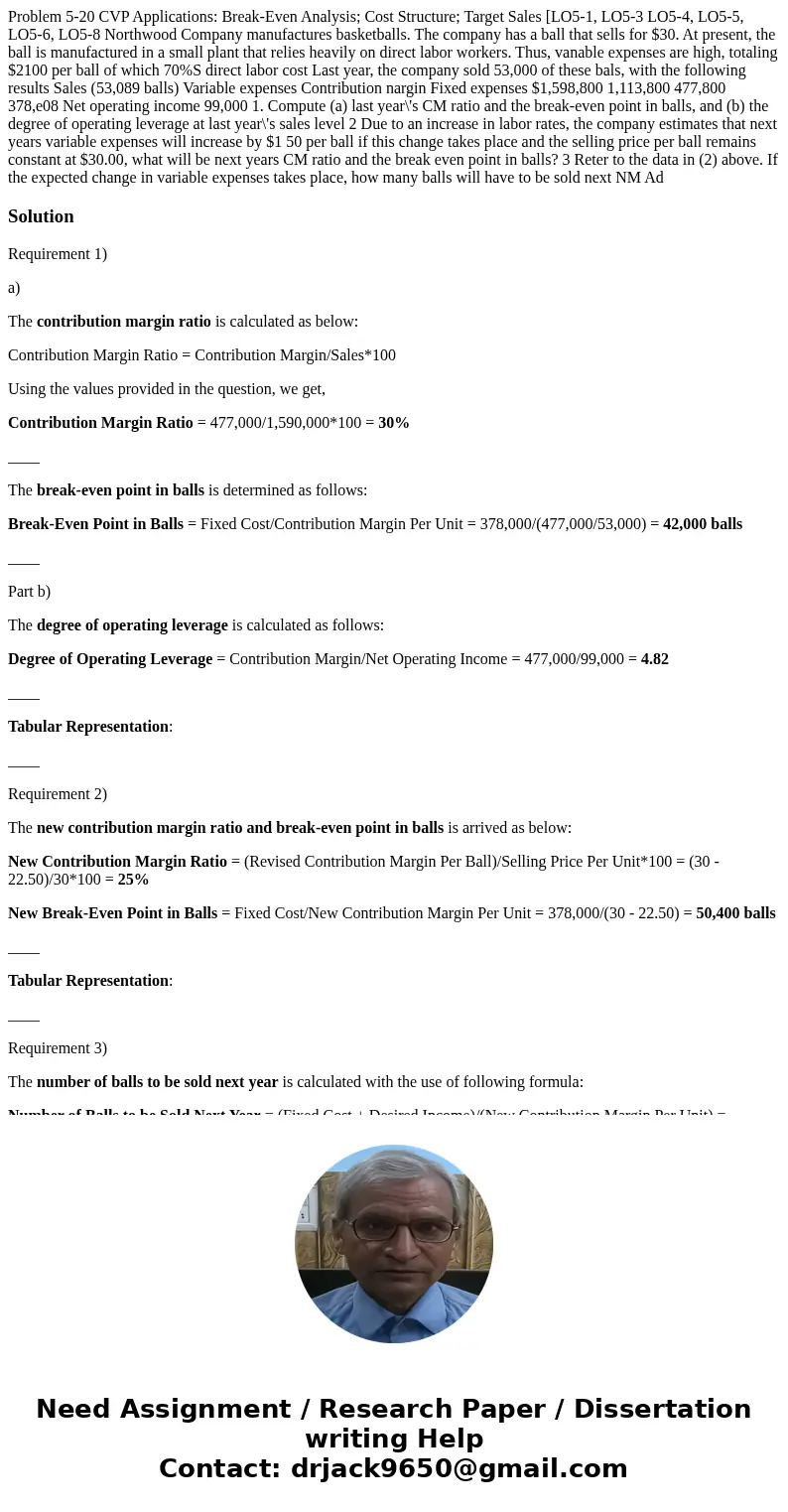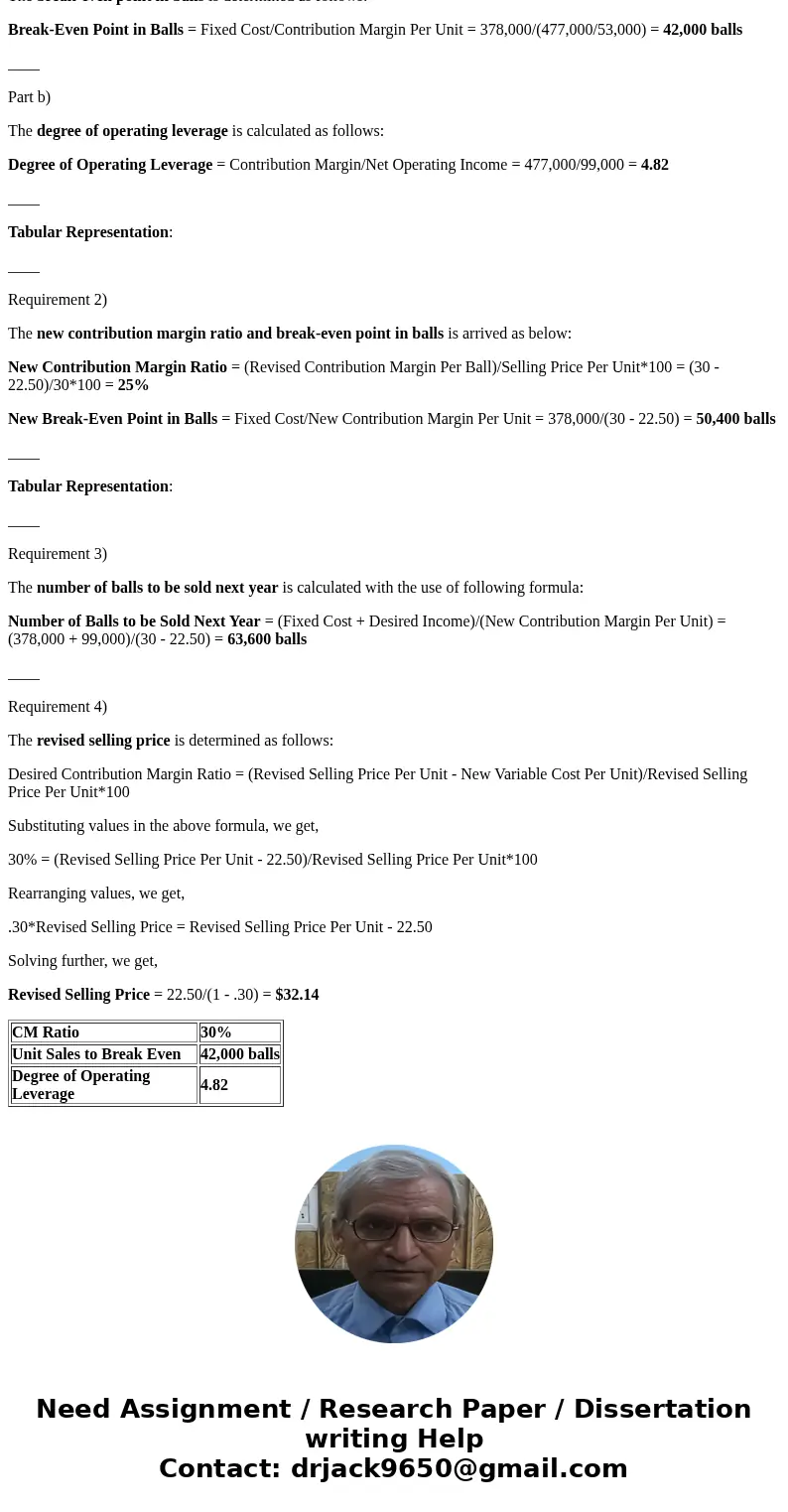Problem 520 CVP Applications BreakEven Analysis Cost Structu
Solution
Requirement 1)
a)
The contribution margin ratio is calculated as below:
Contribution Margin Ratio = Contribution Margin/Sales*100
Using the values provided in the question, we get,
Contribution Margin Ratio = 477,000/1,590,000*100 = 30%
____
The break-even point in balls is determined as follows:
Break-Even Point in Balls = Fixed Cost/Contribution Margin Per Unit = 378,000/(477,000/53,000) = 42,000 balls
____
Part b)
The degree of operating leverage is calculated as follows:
Degree of Operating Leverage = Contribution Margin/Net Operating Income = 477,000/99,000 = 4.82
____
Tabular Representation:
____
Requirement 2)
The new contribution margin ratio and break-even point in balls is arrived as below:
New Contribution Margin Ratio = (Revised Contribution Margin Per Ball)/Selling Price Per Unit*100 = (30 - 22.50)/30*100 = 25%
New Break-Even Point in Balls = Fixed Cost/New Contribution Margin Per Unit = 378,000/(30 - 22.50) = 50,400 balls
____
Tabular Representation:
____
Requirement 3)
The number of balls to be sold next year is calculated with the use of following formula:
Number of Balls to be Sold Next Year = (Fixed Cost + Desired Income)/(New Contribution Margin Per Unit) = (378,000 + 99,000)/(30 - 22.50) = 63,600 balls
____
Requirement 4)
The revised selling price is determined as follows:
Desired Contribution Margin Ratio = (Revised Selling Price Per Unit - New Variable Cost Per Unit)/Revised Selling Price Per Unit*100
Substituting values in the above formula, we get,
30% = (Revised Selling Price Per Unit - 22.50)/Revised Selling Price Per Unit*100
Rearranging values, we get,
.30*Revised Selling Price = Revised Selling Price Per Unit - 22.50
Solving further, we get,
Revised Selling Price = 22.50/(1 - .30) = $32.14
| CM Ratio | 30% |
| Unit Sales to Break Even | 42,000 balls |
| Degree of Operating Leverage | 4.82 |


 Homework Sourse
Homework Sourse